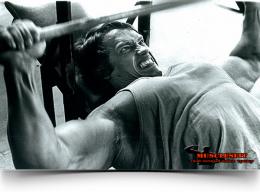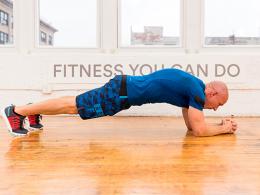How to learn to pull up
If you can’t pull up even once, you don’t need to add swinging and jerking, trying to do at least somehow. Jerks can cause injury. First of all, the shoulder joint.
Therefore, we will start with pull-up exercises that will strengthen your muscles, and then we will tell you how to do the first pull-ups with the right form.
How to prepare for pull-ups
These pull-up exercises will train all the muscle groups needed for pull-ups and improve neuromuscular coordination in this movement.
Your workout will look like this:
- Shoulder involvement - 5 sets of 10 seconds.
- Hold at the top point - 5 sets of 60 seconds. Or negative pull-ups - 3 sets of 15 times.
- Australian pull-ups - 5 sets of 10 reps
- Pull-ups with an elastic band or with support on a chair - 5 approaches at close range.
Perform it every other day so that the muscles have time to rest and recover.
Involvement of the shoulders in the hanging on the horizontal bar
This exercise will improve grip strength and help you remember the correct starting position.
Grasp the horizontal bar with a direct grip so that your palms are slightly wider than your shoulders. Hang on straight arms. Tighten your abs, lower your shoulders and bring your shoulder blades together. Maintain this position for 10-15 seconds. Repeat 5 times.
Perform the exercise always, even when it will be easy. This is a great warm-up for your shoulders before pulling up.
Hold at the top
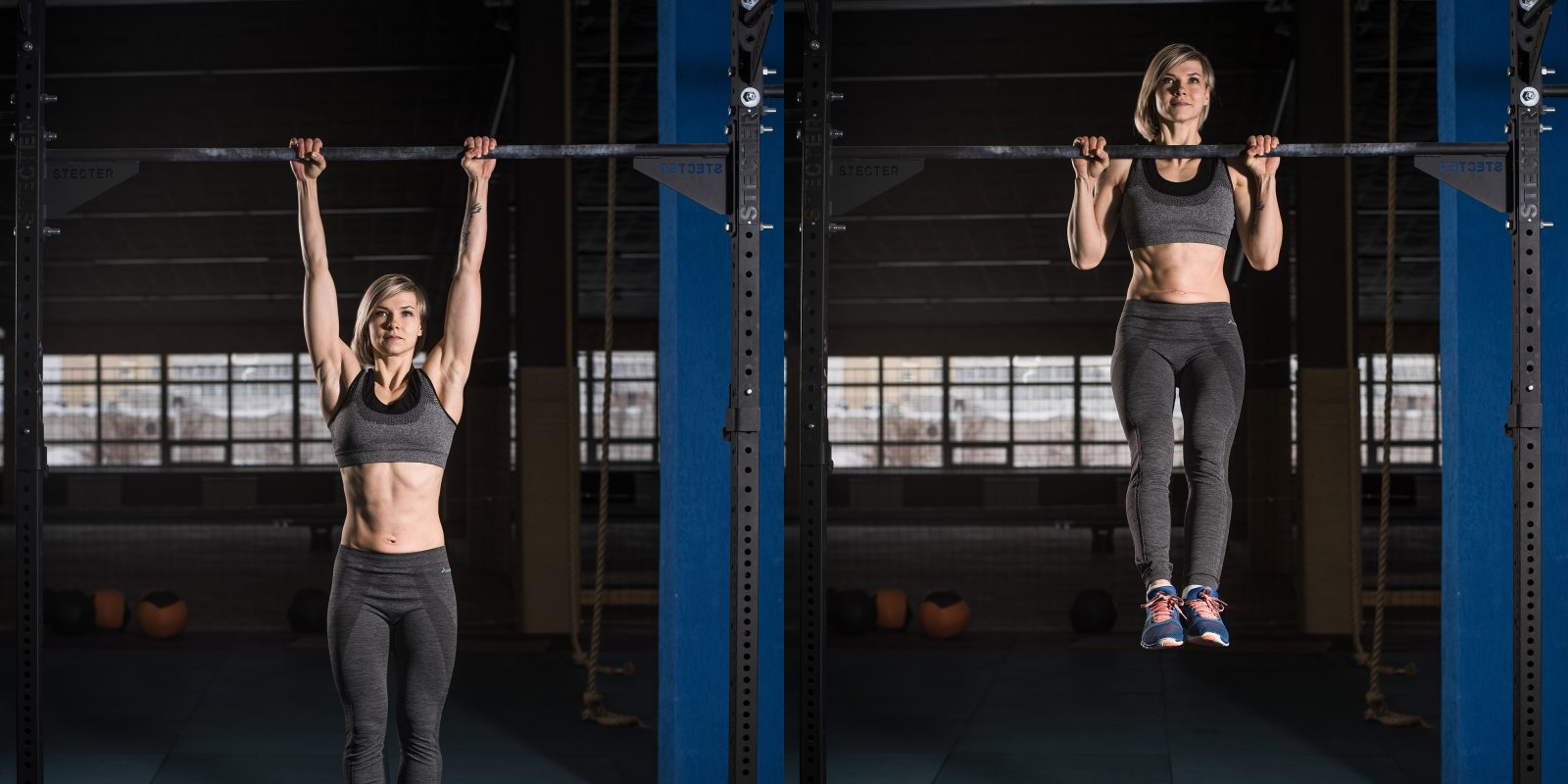
Grab the bar with an overhand grip and jump up to reach the top of the pull-up when your head is over.
Hold this position for 60 seconds. Complete 5 sets. If you can't last a minute, do as much as you can, but try to increase the time each time.
When you get to the minute, replace this exercise with negative pull-ups.
Negative Pullups
Jump on the horizontal bar and do a pull-up using the momentum of the jump. If your horizontal bar hangs too high, substitute a chair. Hold at the top and descend as slowly as possible.
Perform 3 sets of 10-15 negative pull-ups.
Australian pull-ups
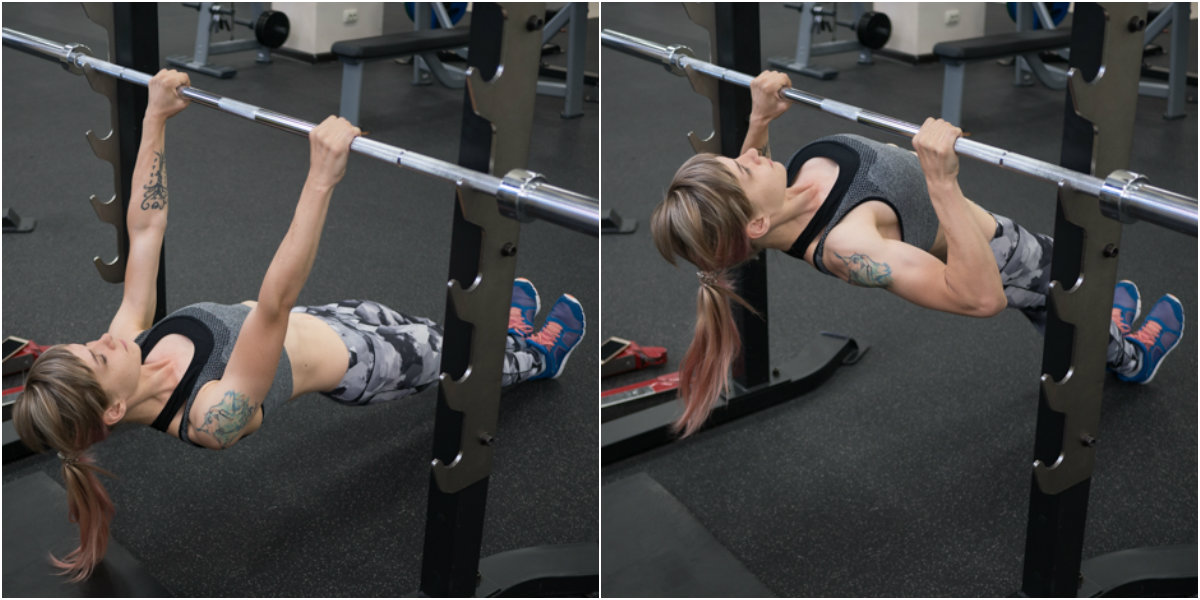
To do this, you will need a low bar, a barbell bar on racks, or even a mop placed on two high chairs. The only requirement is that the bar should be high enough so that you can fully extend your arms while hanging.
Grasp the bar with a straight grip, leave your legs on the floor, stretch your body in one line. Pull yourself up to the bar, touch it with your chest, and then lower yourself back down. The body is always elongated in one line, the press and tense so that the butt does not sag down.
Do five sets of 10-15 reps.
Pull-ups with an elastic band or with support on a chair
If you have a rubber band, hook it to the horizontal bar, put one or both legs into the loop and do pull-ups. The tape will take some of the load off and it will be easier for you.
If you have a range of resistances available, start with the thicker ones with more resistance and work your way up to the thinner ones.
If you don't have an elastic band, put your feet up on a chair. Relax them and try to help yourself in pulling up as little as possible.
Complete 5 sets at close range: as many repetitions as you can.
When you can do 10 reps with support in a set, you can try pull-ups without assistance.
How to do pull-ups
What should be the grip
With a reverse grip, the load is shifted to the biceps of the shoulder, a direct grip loads the back muscles more. Pulling up with a reverse grip is easier, so use it first.
When you manage to complete the exercise with good technique, switch to a direct grip.
What is the starting position
Hang on the horizontal bar. Initially, your shoulders cover your ears. Now lower your shoulders and bring your shoulder blades together, tighten your abs, twist your pelvis a little forward. From this tense position, you will perform pull-ups, and you must return to it.
If your horizontal bar is low, you can bring your legs slightly forward and bend them. The angle between the body and the hips is about 40-45 degrees.
You do not need to bend your legs to a right angle, as if you are sitting on a chair. This pumps the hip flexors, but at the same time stretches the latissimus dorsi and deprives them of some of the strength.
How to climb
Pull yourself up until your chin is above the level of the bar. Do not relax your back: at the top of the shoulder blades should be collected, as in the starting position, the chest is brought forward.
Do not swing or jerk. Movement should be smooth and controlled. You rise strictly vertically and descend in the same way.
Do not pull your chin up as you try to complete the set. The head and neck do not change position until the end of the exercise. Keep the pelvis twisted, straight legs slightly forward, strain them.
How to get down
Go down smoothly, without jerks and falls.
Perform full range pull-ups until your elbows are extended. You can do more incomplete pull-ups, but the muscles will not receive the necessary load.
Do not relax at the bottom point, keep the original tense position.
How to relax
After completing the set, rest for 1-2 minutes. If you rest less, you will not be able to give all your best in the next approach, more - you risk cooling down, so it will be more difficult to start the approach.
How much to pull up
Start with 5 sets at close range. Do as much as you can, but watch your technique. If errors appear against the background of fatigue, such as a sharp fall, an outstretched neck, or jerks, stop the approach, rest and try again.
It's okay if you do fewer reps in the last sets: it's better than overexerting yourself and injuring your muscles.
You can train every day or every other day to give your muscles time to recover.
What to do if it doesn't work
Pulling up is a difficult exercise, especially if you have no sports experience. So don't be discouraged if you don't do much in the first month or two or if you can't pull up without support yet. This is especially true for girls with a weaker shoulder girdle than men.
To strengthen the muscles you need, try some exercises on machines and with free weights.
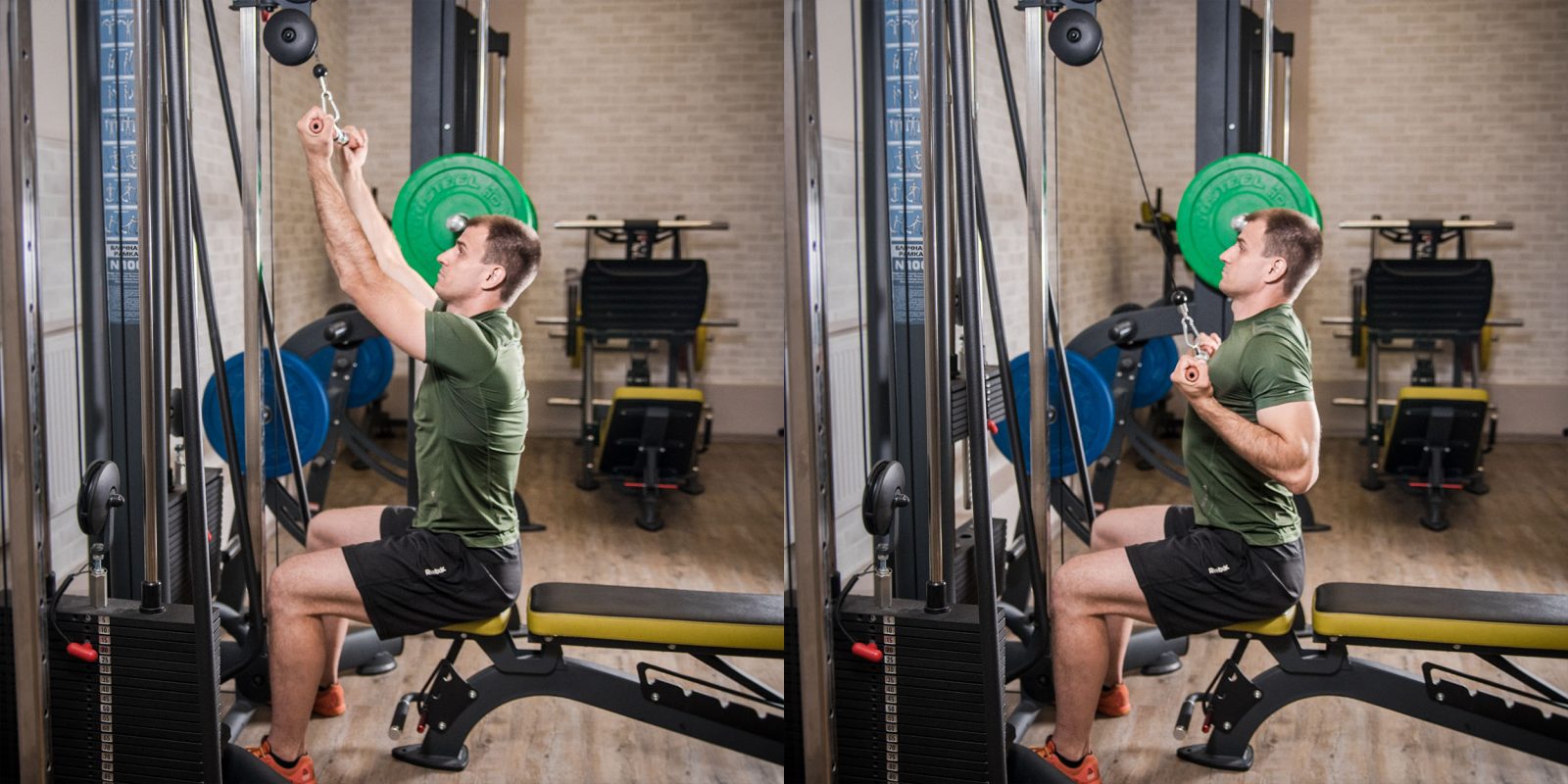
This exercise will help pump the latissimus dorsi, which perform the main Surface electromyographic activation patterns and elbow joint motion during a pull-up, chin-up, or perfect-pullup™ rotational exercise. , Electromyographical Comparison of a Traditional, Suspension Device, and Towel Pull-Up work in pull-ups on the horizontal bar.
Sit on a bench, grab the handle with a reverse grip. Straighten your back, bring your shoulder blades together, press your feet firmly to the floor. Pull the handle to your chest until it touches without changing position. Return and repeat. Perform the exercise smoothly, without jerking and swinging.
Pick up the weight for 8-10 reps. The last repetitions in the approach should be given with difficulty. Do 3-5 sets.

This exercise will help to pump the rear deltoid muscles of the shoulders. Take dumbbells in your hands, start with small ones, 2–4 kg. Tilt your body until it is parallel with the floor. Spread your arms with dumbbells to the sides and slightly forward, return and repeat.
Do 3 sets of 10-15 reps.

The exercise is designed to pump the biceps of the shoulder, this muscle also has a huge load in pull-ups.
Hold the bar in outstretched arms. Bend your elbows and bring the bar up to your chest. Drop and repeat. Do 3 sets of 10 reps. Adjust the weight so that the last rep of the set is difficult.
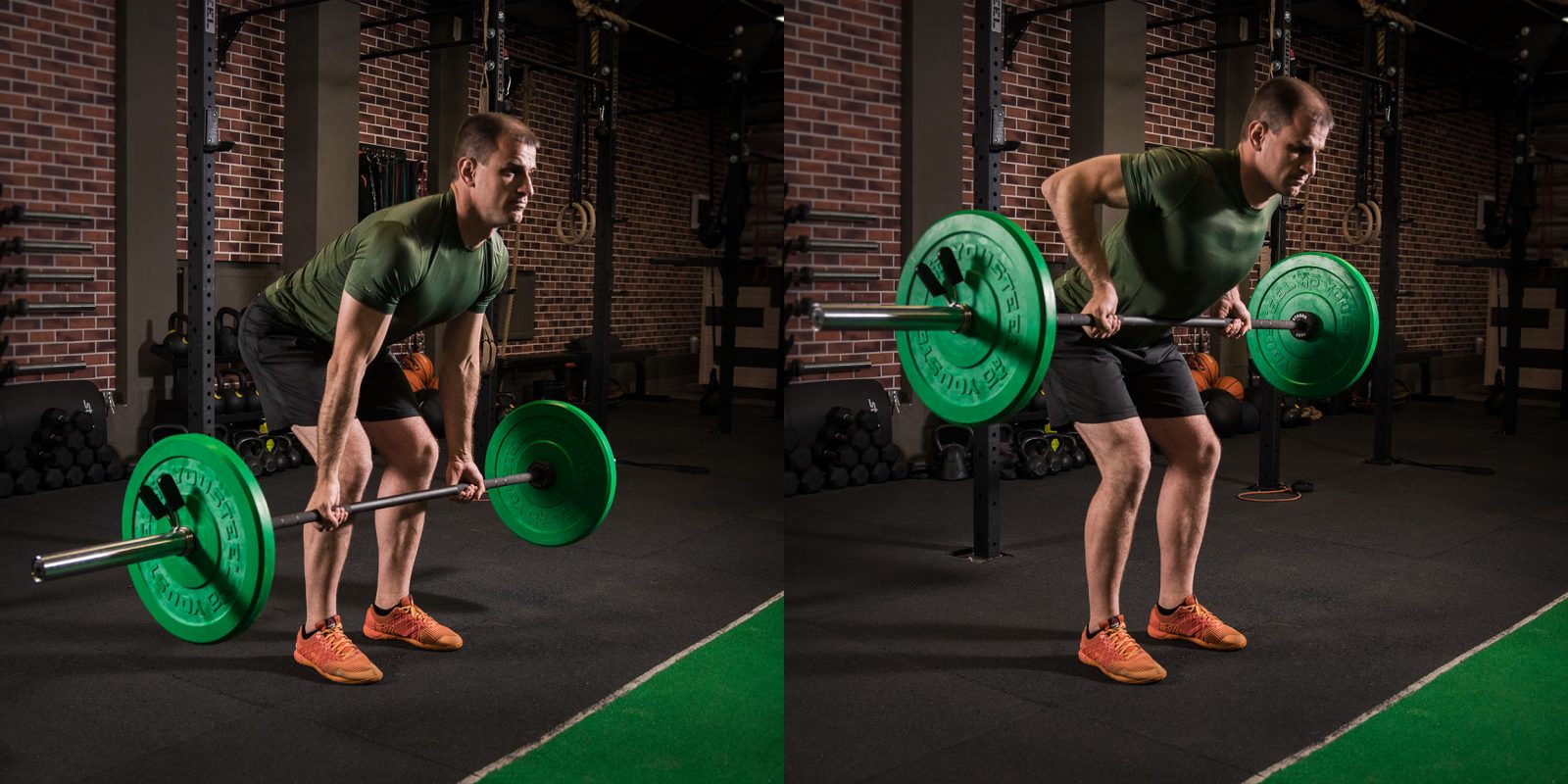
This exercise well loads the latissimus dorsi, as well as the trapezius, deltoid and large round muscles - a complete set for pulling up.
Take the barbell in outstretched lowered arms, bend over with a straight back, slightly bend your knees. Pull the bar to your stomach, and then lower. Do 5 sets of 8-10 reps. Pick up the weight so that the last repetitions are difficult.
What else to do
In parallel, perform lead-up exercises. Only do it on your free days so as not to overload the muscles and lead to injury.
And do not forget about: a strong shoulder girdle is great, but harmony is above all.
Along with weak muscles, excess weight can interfere with you. If this is your problem, in parallel with training the upper shoulder girdle, perform or for weight loss. Even a few pounds can make a big difference.


